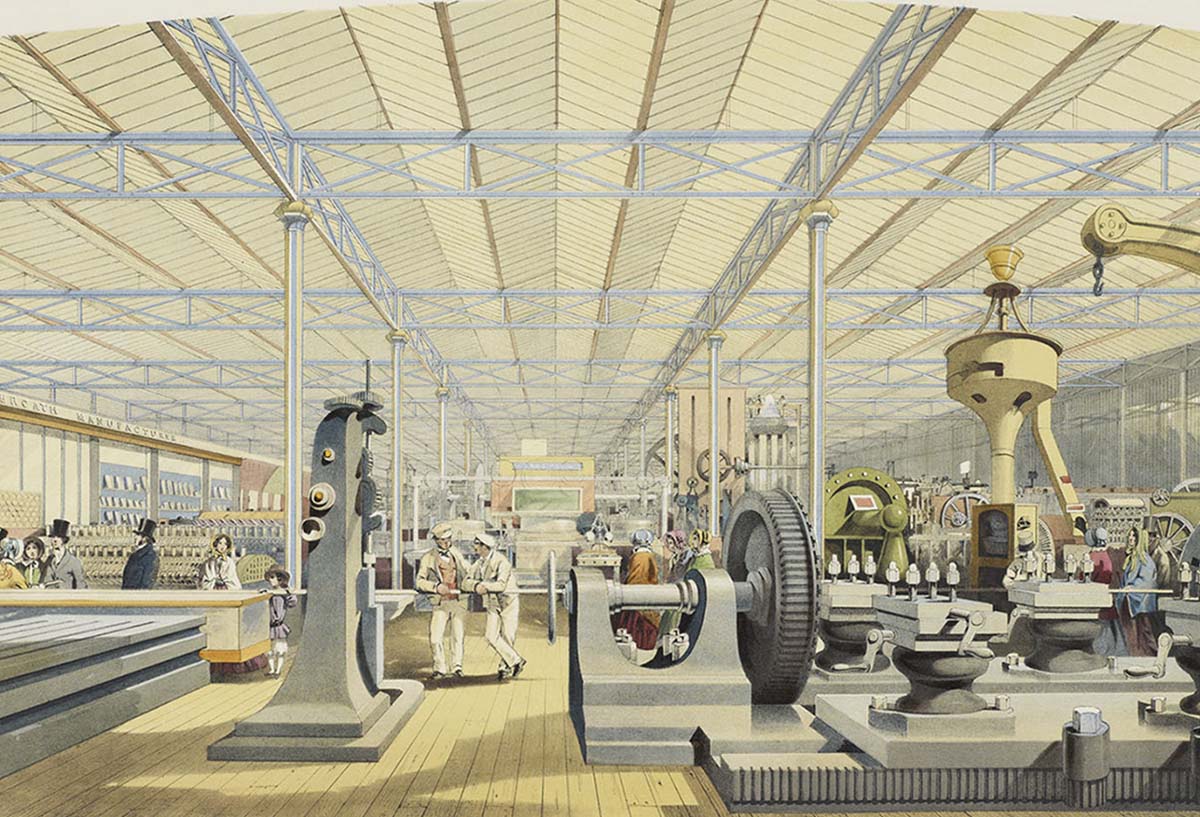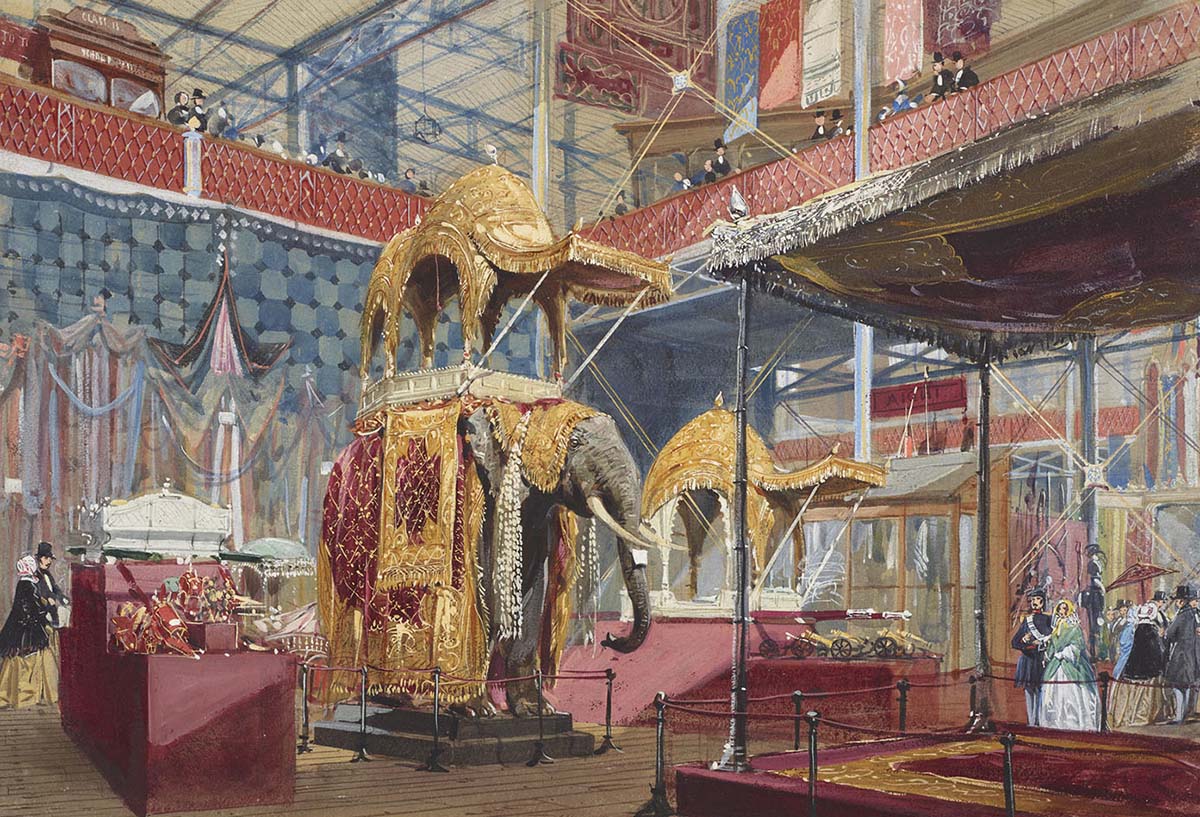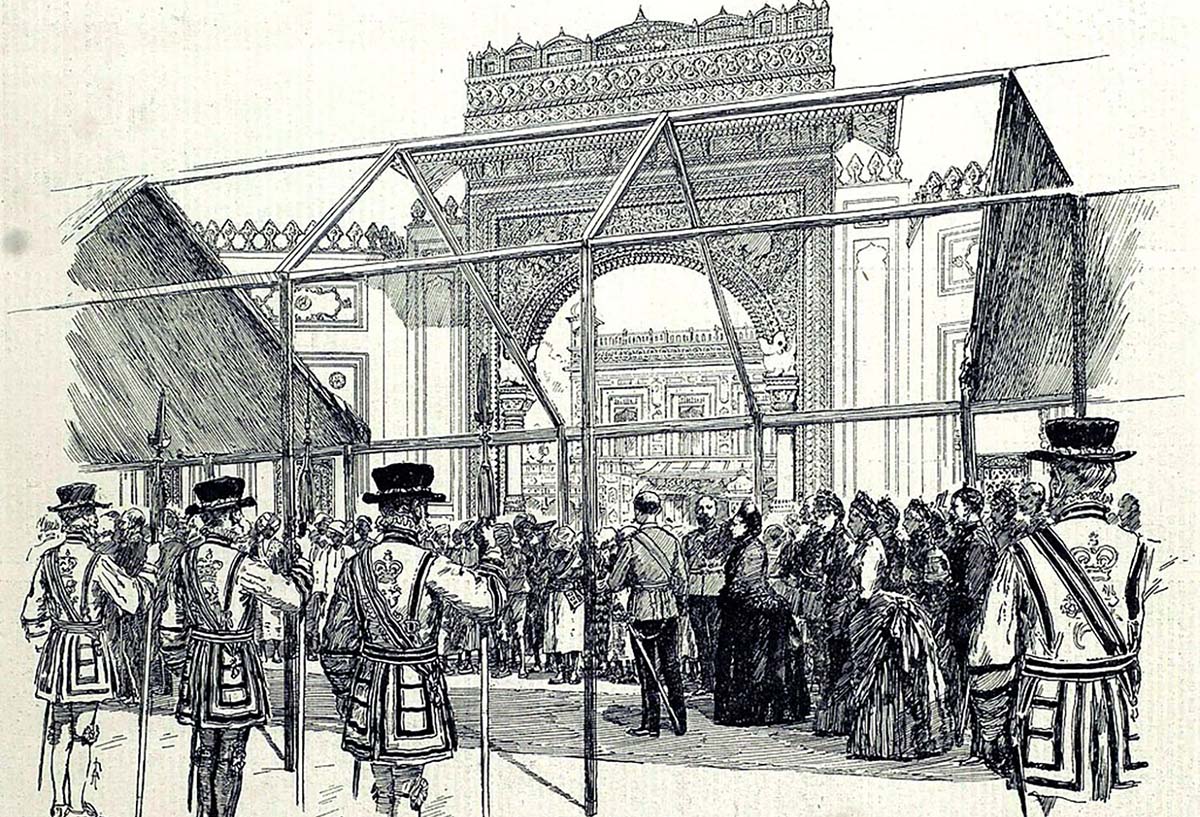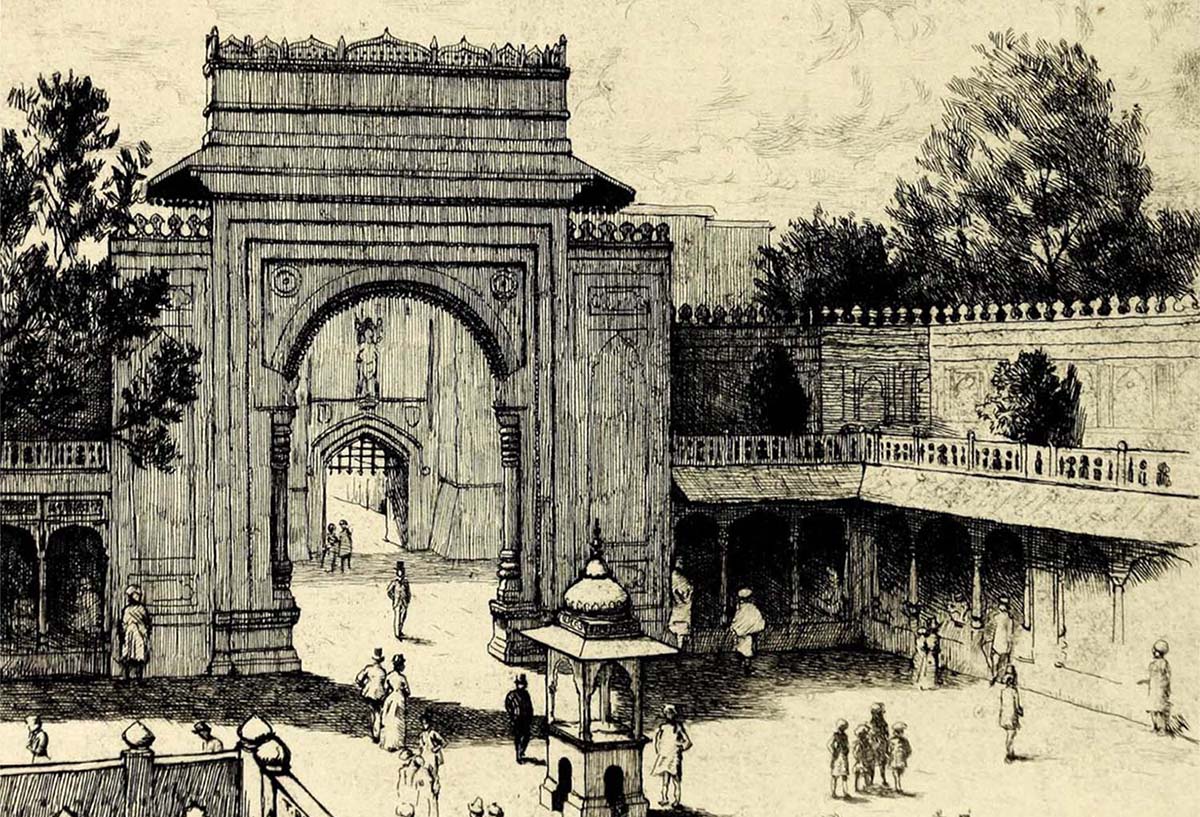PERSPECTIVES
Performing Art, Displaying Culture: Artisan Exhibits in Colonial Exhibitions
During the late-19th and early-20th centuries, spectacular exhibitions organised in western European nations emerged as a tour de force, attracting the public of London and Paris to view a range of objects, from the throne of a maharajah to diamonds from southern Africa. The only thing connecting the dizzying array of cultures were the forces that brought these objects to the exhibition location. Colonial governments and their foot soldiers, in the form of company offices and collection centres in their colonies, acquired objects and art that made their way to fractal displays in giant exhibitions.
The exhibitions were also crucial in introducing new designs and methods for British industries to emulate, in line with the increasing popularity of trade textiles from India, such as recreating the buta on the Kashmiri shawls as the paisley. Colonial exhibitions are thus central in the British consumer’s exposure to rich techniques from the colonies, thus affecting trade design and the eventual emergence of movements such as the Arts and Crafts Movement in the 19th century. The amalgamation of objects from across cultures was considered an essential resource for British industries to emulate the designs found in textiles from the subcontinent.
The Great Exhibition of 1851 was arguably one of the earliest examples of such a splendid display of colonial power in Britain, attracting attention from the public and intellectual community alike. Organised by Henry Cole under the aegis of Prince Albert, the exhibition was a way for the empire to display its industrial prowess on a global scale. According to scholars the exhibition was a possible response to the widespread success of the French Industrial Exposition, held in 1844. The emergence of large scale exhibitions was a direct result of a race to industrialisation, as colonial powers in Western Europe competed to acquire, streamline and produce the most technically sophisticated and aesthetically sound objects from the advent of machinery and automation of processes. The sheer scale of the exhibition is evident in its very structure. The Crystal Palace, a spectacular cast-iron and plate glass enclosure, was designed by Joseph Paxton and built in Hyde Park for the exhibition. The building itself was synonymous with the vision for such exhibitions — of intercultural and global splendour of the empire, realised through the colonies.
Subsequent exhibitions that borrowed from the French and English colonial expositions illuminated the prevalence of the empire as a global economic power through the display of diverse commodities intimately tied with their points of origin. Taking forward the success of the 1851 exhibition, the Colonial and Indian Exhibition of 1886 demonstrated the spoils of the empire through a graded, phenomenological experience; through the introduction of live artisan exhibits which served a specific purpose in line with the growing discourse around design, authenticity and cultural response to the outcrops of the industrial revolution in the western world.
The Colonial and Indian Exhibition opened in South Kensington on May 4, 1886, and lasted for about six months. The inauguration was conducted by Queen Victoria, with the exhibition amassing over five million visitors during its display. The Indian Court of the exhibition was divided into sections pertaining to the Princely States from where goods, art, textiles and other objects were collected for display. Apart from the objects themselves, a simulated environment of India was constructed for visitors, who could walk through the Gwalior Gateway into a recreated Indian bazaar (marketplace), a palace and a jungle. The Indian Court featured over thirty-four artisans demonstrating weaving, brocade work, kinkhwab, calicos and tapestry makers to silver and goldsmiths, clay potters and woodcarvers worked on their tables, to the onlooker’s delight.
The presence of the artisan exhibits was meant to display a romantic view of creating arts and crafts in direct opposition to the proliferation of machine-made goods in the market; the workers rendered designs by hand. Their presence was intended to signpost the importance of imbibing a culture around authenticity amongst British manufacturers and consumers. However, the dissonance of the ideal India recreated in South Kensington was obvious; most of the artisans were prisoners from the Agra Central Jail, who had been trained in different arts and textile traditions as a part of their rehabilitation program. As professor Saloni Mathur has pointed out, it was likely that the artistic knowledge of the workers was taught as a means of prison reform, rather than embodied cultural practices that had been passed down generations. The prison industrial complex enabled the exploitation of prisoners, who were often not compensated or paid meagre wages for their work in an effort to increase the profit margin of the prison-made goods.
The Colonial and Indian exhibition reflects the hollowness of relying on an abstract, ancient cultural history that is premised on the backs of colonial and capitalist exploitation. The presence of the exhibits in colonial history displays the voyeurism of performing culture, on which the invigoration of the colonial industry was premised. While, on the one hand, the merits of witnessing artistic work done in person was meant to invigorate the design aesthetic of the nation, it was the same mechanised industry that went on to gut the existing indigenous artistic practices of India, the repercussions of which can be felt to this day.
Bibliography
“Colonial Indian Exhibition: The Indian Empire.” Illustrated London News, July 17, 1886.
Barringer, Tim. Men at Work: Art and Labour in Victorian Britain. New Haven: Yale University Press, 2005.
Briefel, Aviva. “On the 1886 Colonial and Indian Exhibition.” BRANCH: Britain, Representation and Nineteenth-Century History. Accessed May 7, 2024. https://branchcollective.org/?ps_articles=aviva-briefel-on-the-1886-colonial-and-indian-exhibition.
Codell, Julie F. “Indian Crafts and Imperial Policy: Hybridity, Purification, and Imperial Subjectivities.” In Material Cultures, 1740-1920: The Meanings and Pleasures of Collecting. Edited by John Potvin and Alla Myzelev, 149–70. Surrey: Ashgate, 2009.
Mathur, Saloni. India by Design: Colonial History and Cultural Display. Berkeley: University of California Press, 2007.







